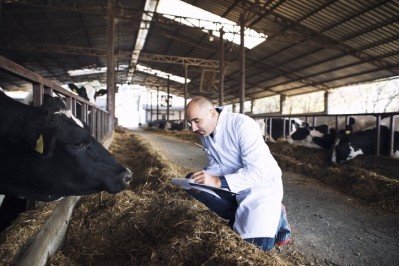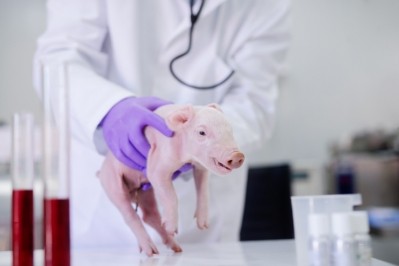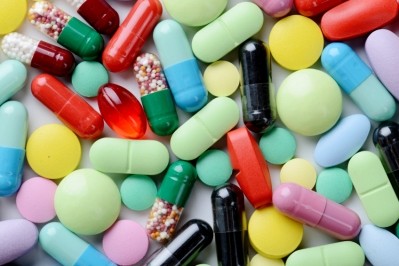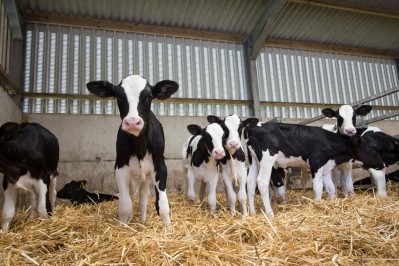UK politicians call for action to limit the use of antibiotics in livestock
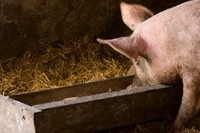
The members of the UK Parliament’s Science and Technology Committee held an inquiry into antimicrobial resistance and in a report, published yesterday, said:
“Current practice across both health and veterinary services is failing to prevent the inappropriate prescription of antibiotics.
The Government needs to set clear responsibilities at all levels of the NHS and veterinary medicine to achieve better stewardship of the antimicrobial drugs vital in modern medicine.”
The politicians said they were concerned that total veterinary use of tetracycline antibiotics had increased nearly tenfold and that of penicillin nearly fivefold since 1969.
"Antibiotic use in pigs and poultry in the Nordic countries is three to five times lower than it is in the UK. These countries have much lower levels of resistance in food poisoning bacteria than that found in many EU countries,” notes the report.
Debate over origin of human resistance to antibiotics
Andrew Miller, chair of the Committee, said that while the link between human and animal pathogens antibiotic resistance (AMR) has not been conclusively proven, the MPs believe the UK government should be taking precautionary action to ensure that antibiotics are only being used on sick animals.
The extent to which antibiotic resistance can move from bacterial populations in animals to those in humans is not clear. Representatives from National Office of Animal Health (NOAH) and the Responsible Use of Medicines in Agriculture (RUMA), in their evidence to the inquiry, suggested limited transmission rates.
NOAH highlighted a study by Mather, published in Science in 2013, which found that “salmonella and its resistance genes were largely maintained within animal and human populations separately and that there was limited transmission, in either direction”.
John Fitzgerald, secretary general of RUMA, told the inquiry that researchers, such as de Been, who had originally proposed that resistance problems in humans had been caused by poultry had, more recently, “changed position strongly”, announcing that they had “looked more deeply into this” and could not support their original conclusion.
But the Alliance to save our Antibiotics said that “farm antibiotic use contributes significantly to the human resistance problem."
Cóilín Nunan, principal scientific adviser with that group, said there was lack of data in the UK on which antibiotics are being used in which animals and the number of doses being given.
Administration of antibiotics
The MPs were told that Denmark had a "centrally coordinated" system, where veterinarians report prescription data and usage on-farm. And this meant Denmark was able to produce much better and more accurate data on how antimicrobials are actually being used on Danish farms.
UK farming minster, George Eustice, discussing the role of veterinarians and antibiotics in his evidence to the inquiry, said there is a need to ensure it is the veterinarian linked to the farm that actually prescribes the antibiotics required.
He also said that some of the alternatives to antibiotics in animal husbandry, developed under EU funded projects, are anecdotally reported to have had “some impact”, but that they tend to “fall” at the “final hurdle” of clinical trials.
Importance of antibiotics
Other witnesses stressed the importance of antibiotics to veterinary medicine.
Catherine McLaughlin, animal welfare and policy adviser at the National Farmers Union, told the MPs the “UK poultry industry voluntarily banned the use of some critically important antibiotics at about this time last year” and consequently, had to raise their hygiene standards to be “better than hospitals” to reduce the higher mortality rate in young chicks.
Although a high standard of hygiene could be achieved in a “closed environment, that type of hygiene would not be possible in the more extensive outdoor-type systems,” she said.
McLaughlin said that if a ban were introduced on adding antibiotics to feed and water, then “it would make pig production in the UK pretty much impossible.”
France proposes increased surveillance
ANSES, the French agency for Food, Environmental and Occupational Health and Safety, in a report last month, recommends the implementation of methods for close monitoring of the administration of antibiotics in farms, according to species, sector and production type.
The agency also proposes discontinuing the use of preventive antibiotic therapy and reserving the use of antibiotics such as 3rd and 4th generation cephalosporins and fluoroquinolones to special circumstances.
It also advocates the use of narrow-spectrum antibiotics that target the bacteria in question and recommends the development of alternatives to antibiotics to ensure optimal animal health.
Benchmarking system for Dutch feed companies
Meanwhile, in the Netherlands, feed companies are set to face a benchmarking system in a bid there to shore-up the antibiotic reduction drive on poultry farms.
Dr Hetty van Beers-Schreurs, director of the Dutch Veterinary Medicines Authority (SDA), reporting on the success of the Dutch poultry production industry in lessening its reliance on therapeutic antibiotics, told this publication in May:
“A proposal has been tabled by veterinarians and farmers in the Netherlands to rate feed companies against the usage levels of antibiotics on the chicken farms they supply.”
The results of the SDA survey for 2013, looking at the broiler sector, show it has achieved a decrease in antibiotic usage of between 40% and 50%.
The Dutch government is looking for a reduction in antibiotic usage across all livestock sectors by 70% by next year. But van Beers-Schreurs said more responsible use, rather than additional decreases in the amount of antibiotics being employed, is the key to tackling resistance to antimicrobials in animals and ensuring a high level of animal welfare.
Criteria such as animal nutrition, the quality of the management and the livestock housing environment are vital for maintaining animal health on the farm, said the SDA boss.
“Feed companies play an important role,” said van Beers-Schreurs. "They realize they are part of a team to improve animal health."
